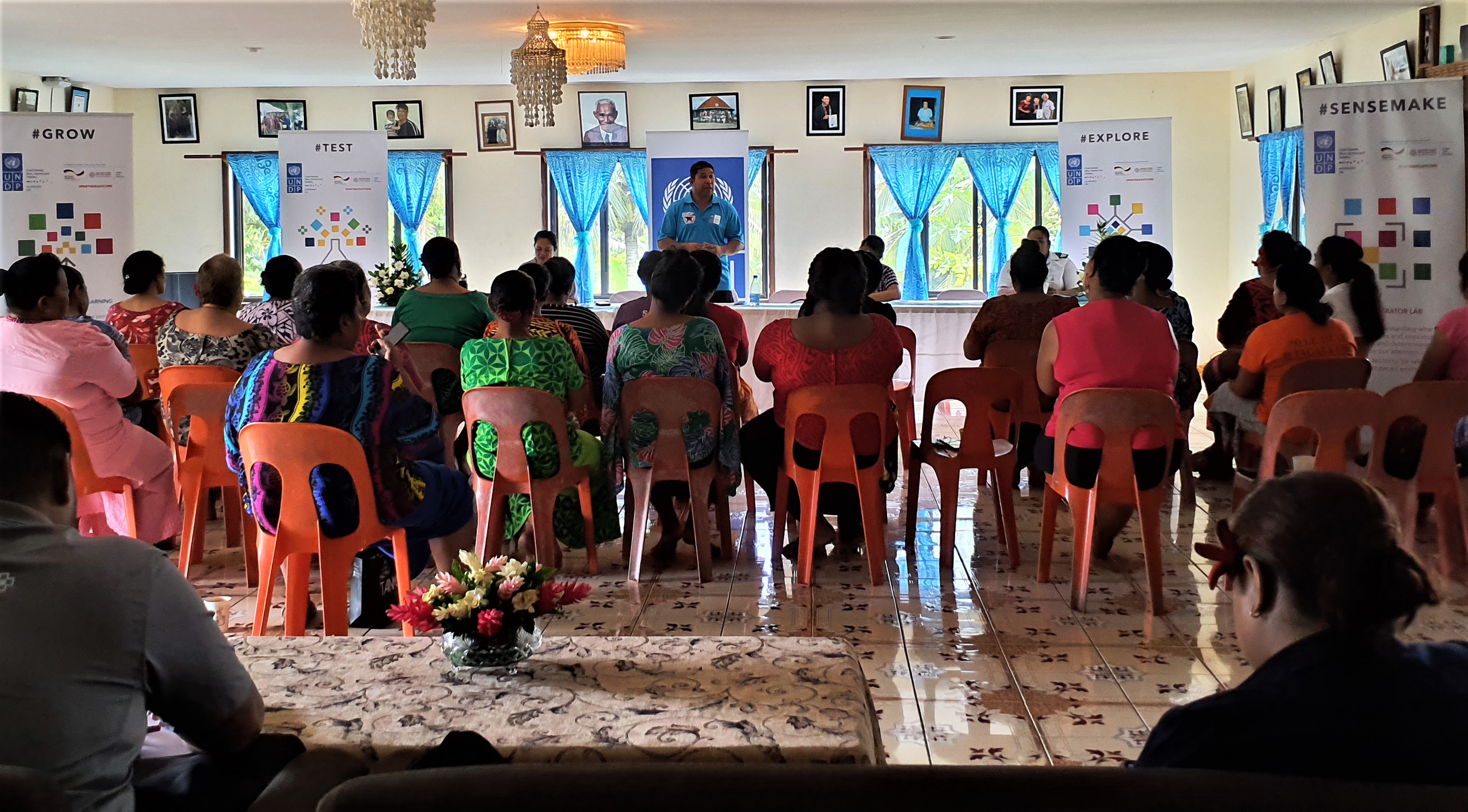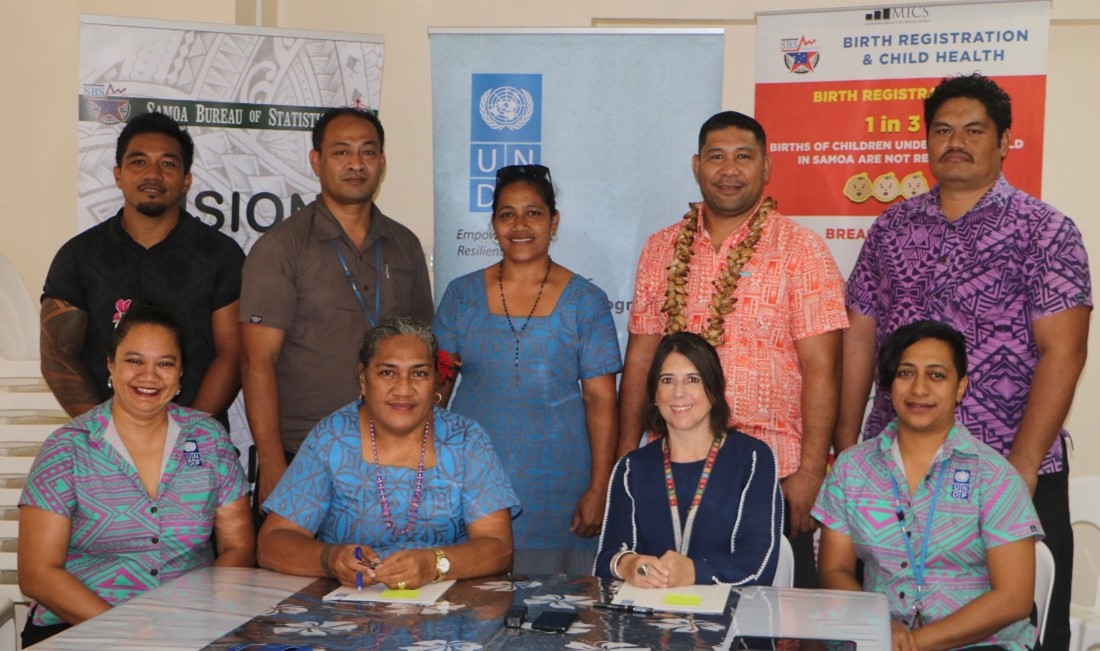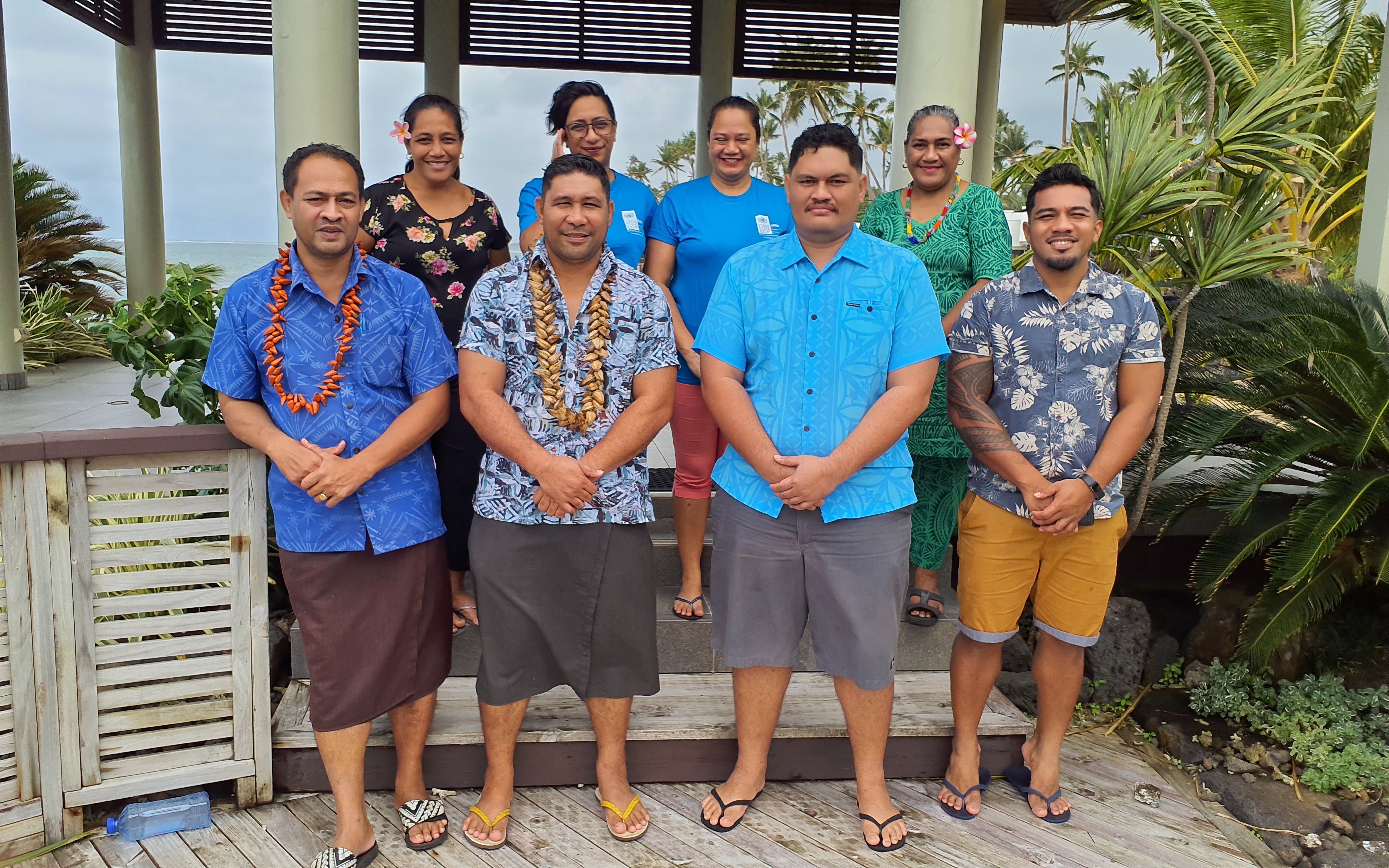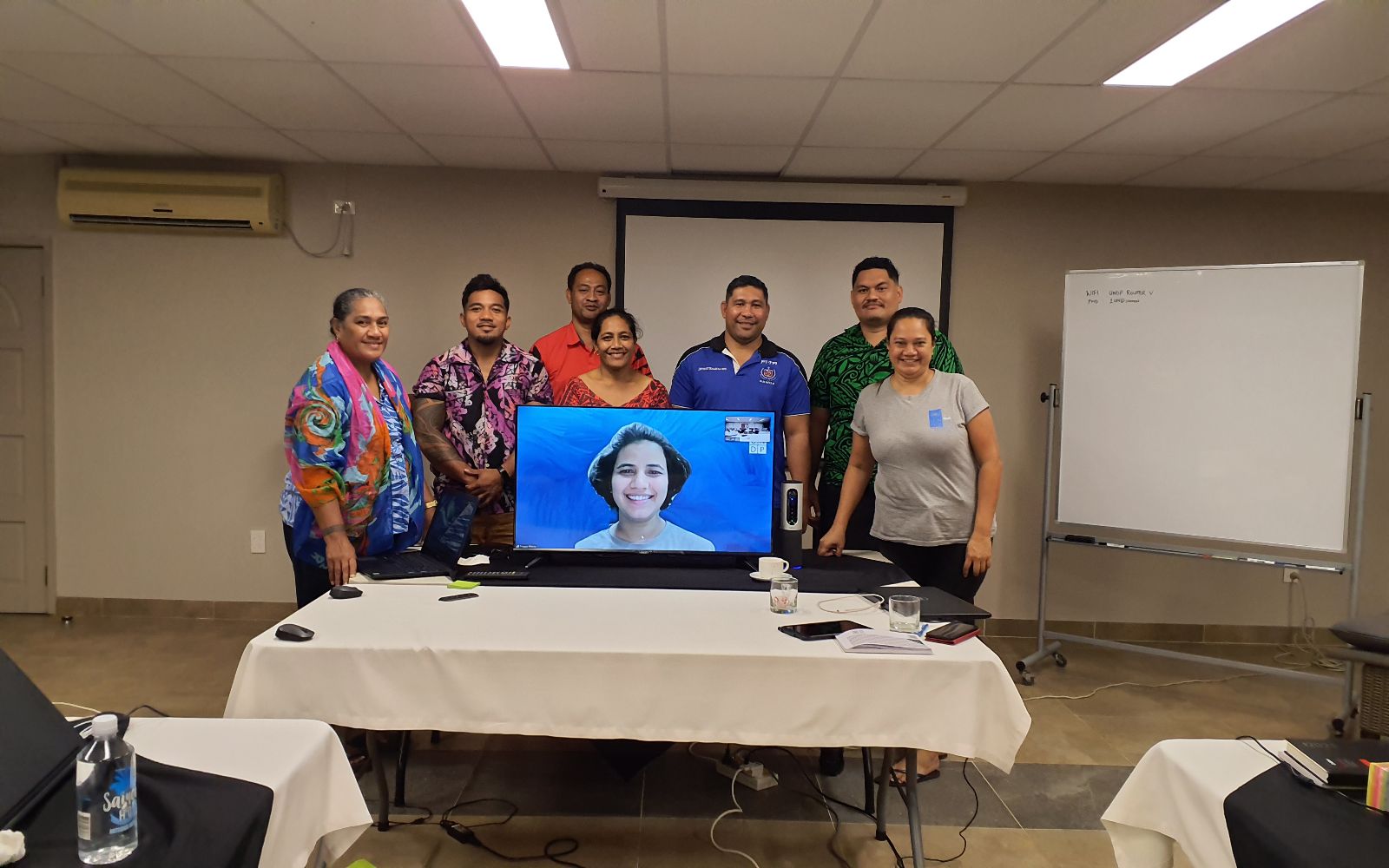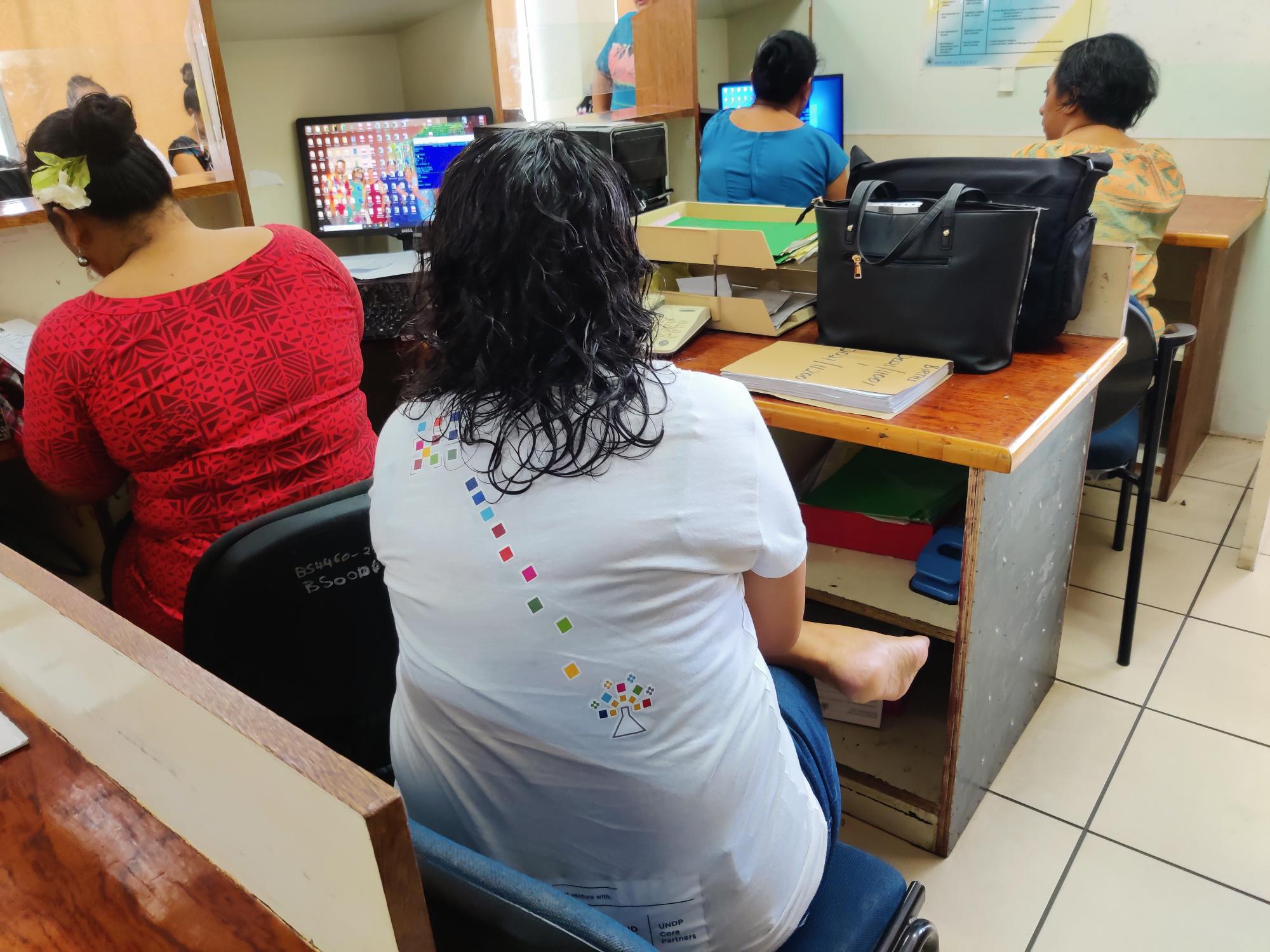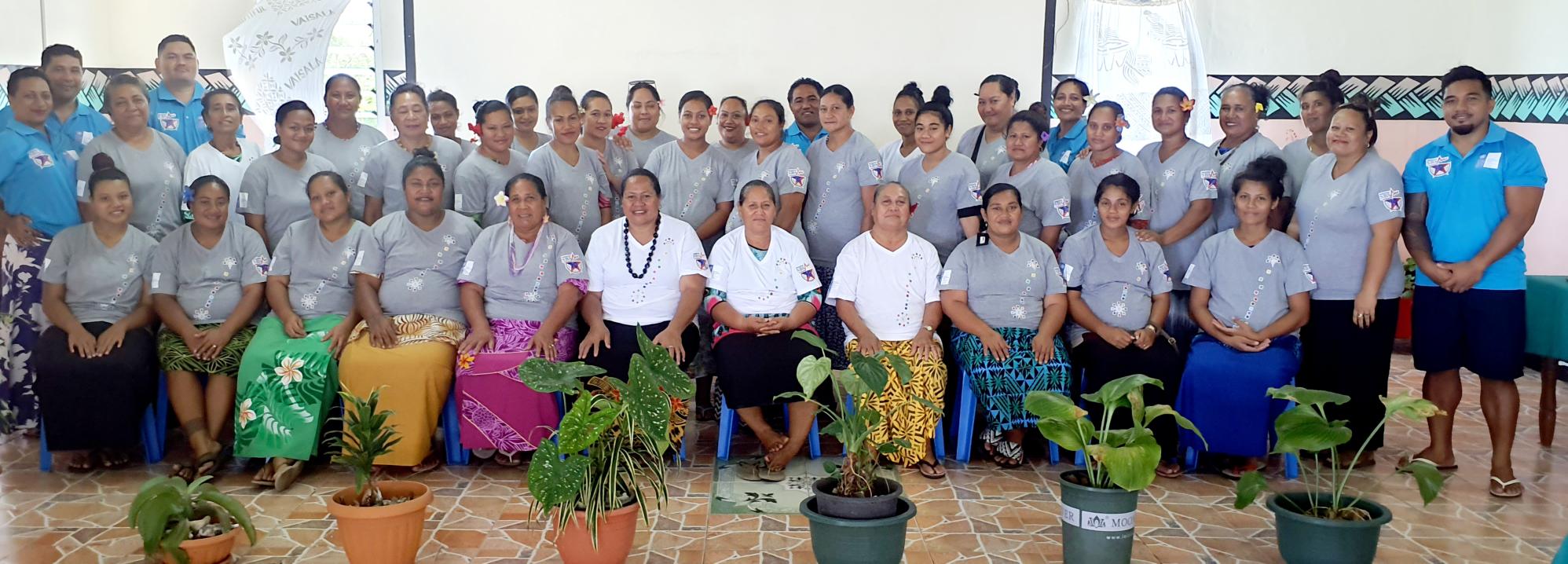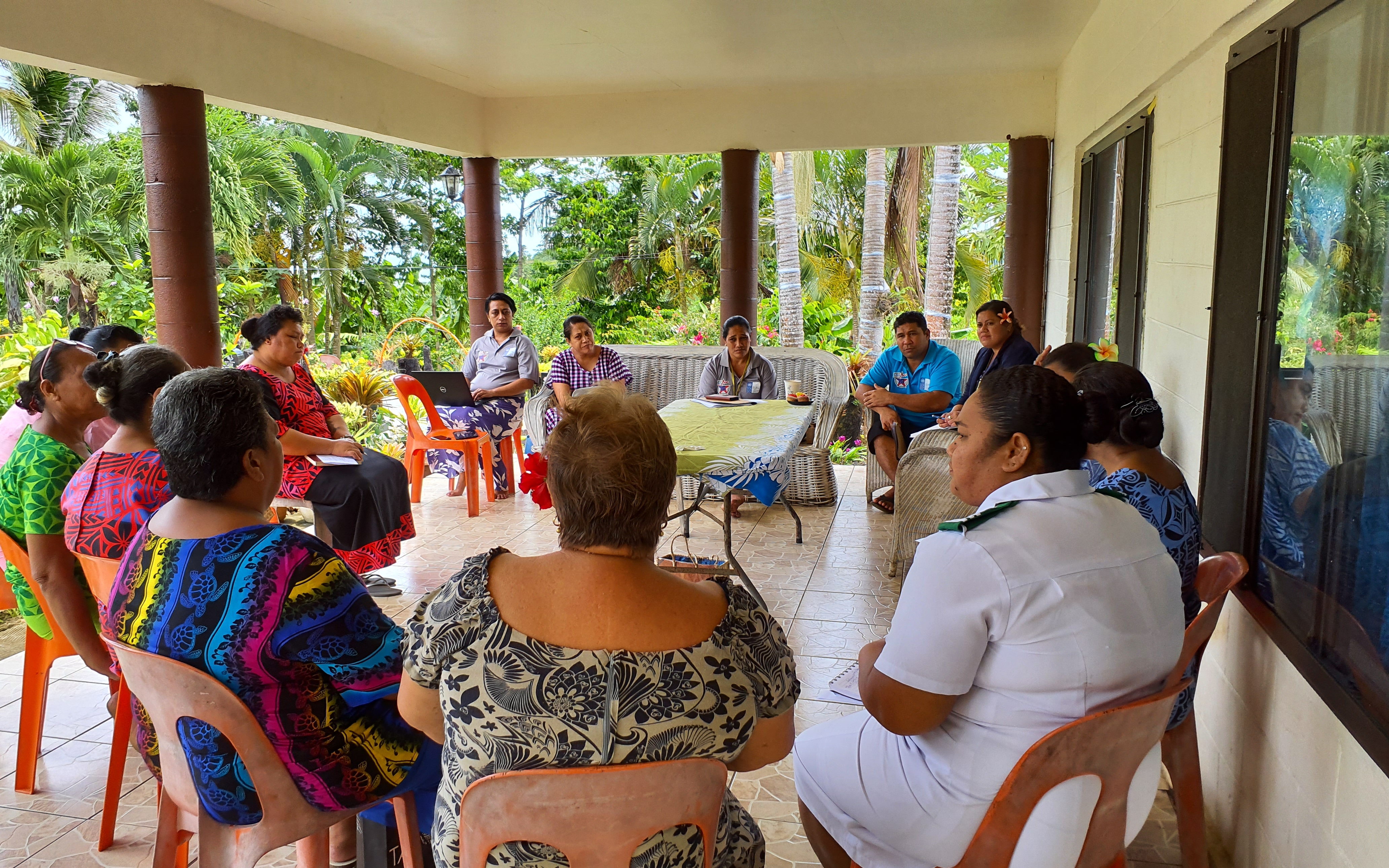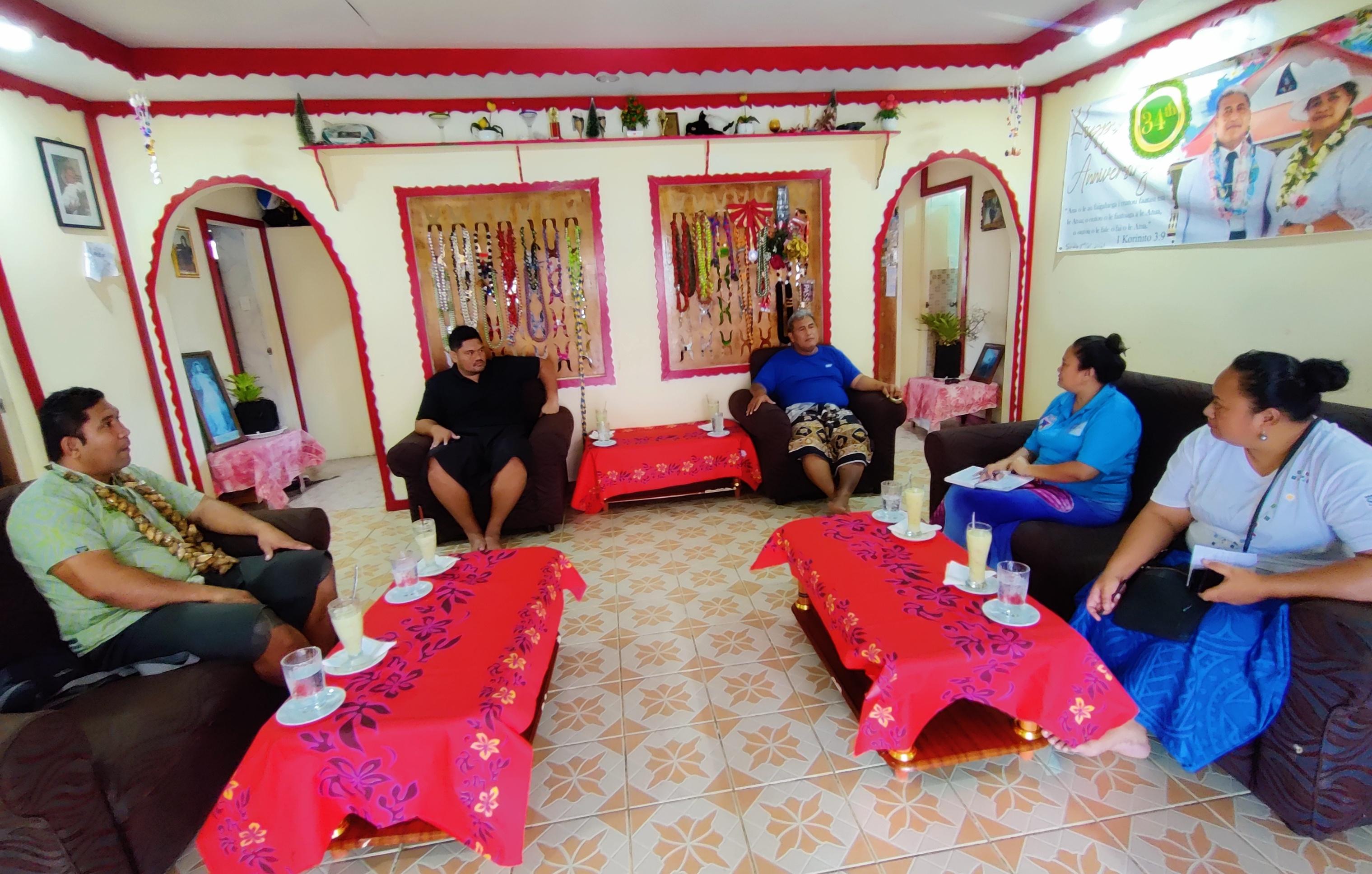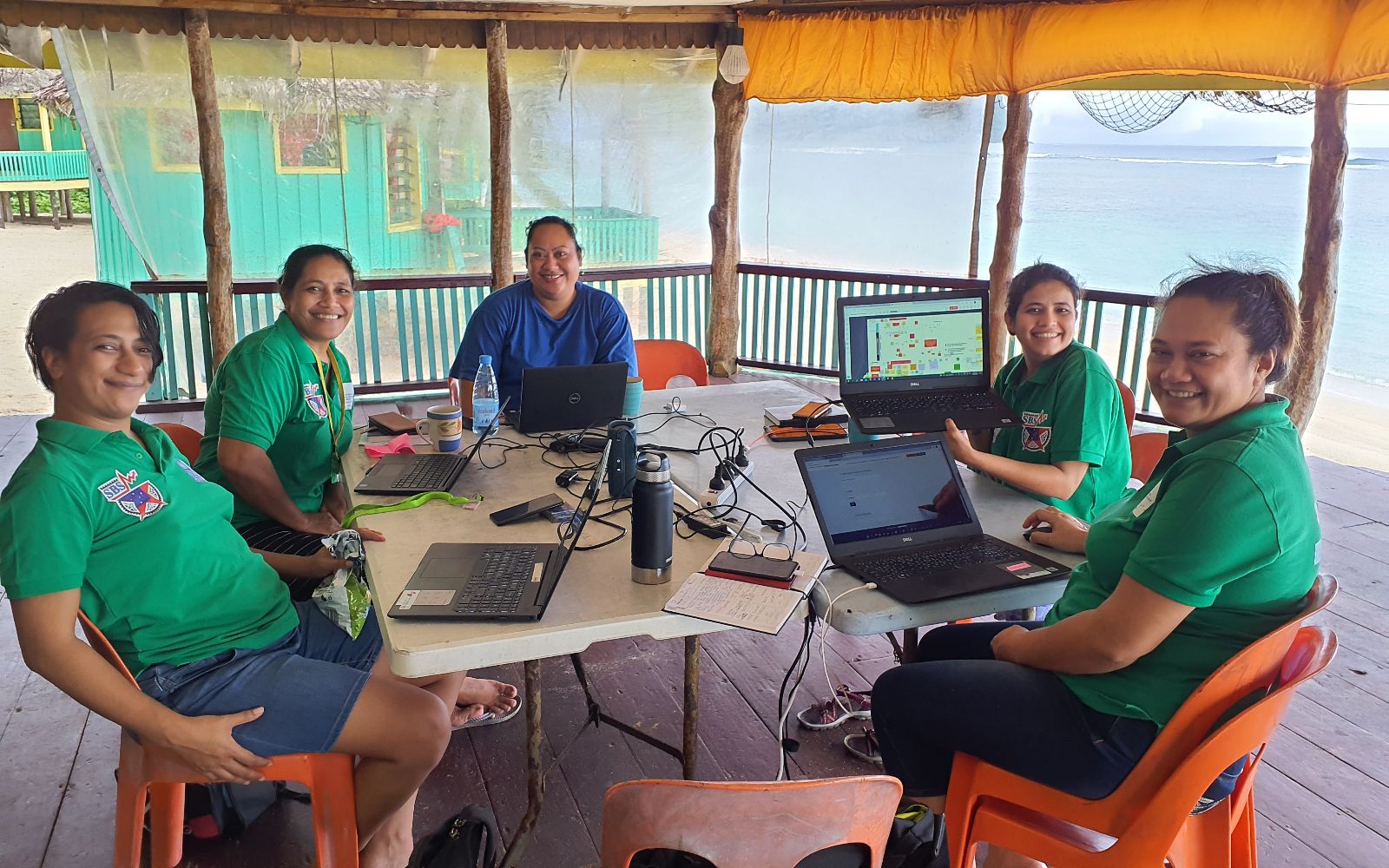Part 1: Sensemaking of the current birth registration system to surface gaps/opportunities for innovation and improvements
Accelerating Learning on strengthening the Birth Registration System in Samoa
March 30, 2022
Community Consultations - Sensemaking of the current birth registration system to unearth gaps opportunities for innovation and improvements
Since 2018, Samoa has looked towards investing in digital transformation to enhance economic, social and political progress. One such development is the national digital identification project which is led by the Samoa Bureau of Statistics (SBS). A key cornerstone to successfully building a comprehensive and secure national ID rests in part with cutting edge technology and a robust Civil Registration Vital Statistics data or CRVS. This too is within the mandate of the SBS and is the basis for which the Accelerator Lab and Samoa Bureau of Statistics (SBS) have formed a partnership to explore how to strengthen its birth registration system.
Birth Registration Process in Samoa
Samoa’s Births, Deaths and Marriages Act 2002 (BDM Act 2002) requires the legal registration of all births, deaths and marriages. For the purposes of this partnership, the AccLab and BDM are focusing on accelerating learning on how to strengthen its birth registration system. In accordance with the legal mandate, all births must be notified to the birth registrar within 14 days of the birth or in the case of the Director General of the hospital, no later than 28 days after the birth of the baby.
Registration of a baby is completed when the person responsible completes and submits a birth notification form or the B10 form to the birth registration office and signs the subsequent registration form or B12 within 28 days (BDM Act 2002, s11). Responsible person/s in the notification to the Registrar General of a newborn rest solely on the biological parents of the baby and/or the Director General Health. Once notification has been furnished in person to the BDM office with the requisite documentation, then registration of the baby and issuance of a birth certificate takes place (BDM Act 2002, s12). The legislation also allows for the registration of abandoned babies and stillborn.
Birth Registration Status in Samoa
Birth registration is the CONTINUOUS, PERMANENT and UNIVERSAL recording, within the civil registry, of the occurrence and characteristics of births in accordance with the legal requirements of a country.
Name and Nationality is every child’s right, enshrined in the Convention on the Rights of the Child and other international treaties. However, as per the Samoa DHS-MICS2019-20, child discipline, labour, marriage and development, over 33% of children over the age of five years remain unregistered.
In the report - EVERY CHILD’S BIRTH RIGHT Inequities and trends in birth registration - published by UNICEF, 2013 (for the reference year 2009, only 48% of the birth were registered). As per child discipline, labour, marriage, and development section under Samoa DHS-MICS 2019-20, the percentage of birth registration has increased to 66.7%. This data is for children aged five years and above. We do not have the data break-up at what age (and how long after their birth) these children were registered.
Learning Challenge: How might we strengthen the birth registration system to reduce delayed or no birth registrations?
Reconciling the existing birth registration system against the practical implementation
To understand the current birth registration process, both AccLab and the core team of the Birth, Death and Marriage (BDM) division of SBS, embarked on the learning challenge to map the process at three levels: (1) Systems level, (2) Direct Implementation Level, and (3) Cultural Practices level.
We took a deep dive at all three levels, employing multiple approaches, seeking diverse sources of data, and bringing an empathetic listening ear to the community, gauging how the system and processes play out in action at community level, interacting with the culture and beliefs.
1. Systems level sensemaking:
AccLab kickstarted this learning challenge by bringing core SBS team together and demystifying the system from their perspective.
We focused on mapping the current system from (1) requirements as per the Births, Deaths and Marriages Act 2002 (BDM Act), and (2) interpretation of this system by its current users and custodians i.e. BDM division at SBS. The following approaches were used to understand systemic level aspects of the birth registration process:
a. Visually Mapping the existing birth registration system: To make the system visible and vivid, AccLab co-designed a two-day workshop for the key team members from the BDM division and the key Ministries involved in the notification process, such as the Ministry of Health (MOH) and the Ministry of Women, Community and Social Development (MWCSD) to visually map out the birth registration system on a mural board and look at each stage of the process in detail to surface challenges they perceive might be contributing to inefficiencies.This helped in breaking the ice between the hierarchies within the BDM Units in how they see the system and enabling AccLab’s understanding of the current birth registration system comprehensively.
b. Reviewing the legislative framework: Legislative framework is a skeleton that guides and informs the system design. Thus, we also focused on interpreting the BDM Act 2002 to discern how it played a key role in the current system design. This process gave us insights into some of the policy changes/legislative reforms that need to be reviewed to strengthen the system.
c. Tracing the process from birth confirmation/notification to birth registration – This is the logical next step from visually mapping the system. We traced every step of the birth registration process at the field level to understand the system at the implementation level.
Samoa’s birth notification and registration system is a multi-layered process depending on where the child is born i.e. main hospital, district hospital or at home. For each of these categories, there are different processes and forms, especially the Birth Notification or B10 Form, that records that a birth has happened.
Although the B10 form is an important part of the birth registration process, on its own, it is not identified as a legal document. It is intended to inform the BDM about the birth of a child, acting as an information source that can be leveraged for following up on birth registrations.
Below is the ideal process that is required to be followed right after a birth to ensure the baby is registered within three months of the ideal registration period.
- Birth at the main hospital in Apia, Upolu - All the hospital births (both main and district hospitals) come under the mandate/responsibility of the Ministry of Health, where they are the primary record keepers of births. The main hospital in Apia records the highest number of births. All the births in the main hospital are recorded in the hospital’s centralized record system, which consists of manual registers. Additionally, the nurse or midwife on duty issues a childbirth notification form (B10 form) to the mother of the newborn. Within three months of the birth, this form is required to be taken in person by the birth parents to the BDM division at SBS, located in central Apia.
A copy of the B10 form is sent by the hospital to BDM following which the B10 form details are entered in the system. When the birth parents go to the SBS in person, along with their B10 form, the BDM staff verifies the information on the system and fills out the B12 form for birth registration. Upon payment of a $15 fee, a printout of the birth registration is issued. This completes the birth registration process. - Birth at the district hospitals in Upolu and in Savaii - Like the main hospital, all the hospital births at district hospitals are recorded in the medical register (paper based) or what is known as the Maternity Birth Registration Books. A B10 form is given to mothers and a copy sent to BDM for entry in their system. While mapping this process, we found through our shadowing observations that some of the local district hospitals who had not received a batch of B10 forms from the main hospital in Apia, registered their births using the birth registration form internal to the hospital. Birth parents are required to travel to the main BDM office in Apia or Salelologa, Savaii and be present in person to complete the birth registration process.
- Home births – These come under the mandate of the Ministry of Women, Community and Social Development. The role is further assigned to the women’s village representatives or Sui Tamaitai o Nuu (STNs) and registered traditional midwives. In the case of home births, the STN fills the B10 form. Instead of giving the B10 form to the mother, STNs submit the B10 form to the BDM office. Birth parents are required in person at the BDM office to complete the birth registration process.
However, after three months of birth, if the birth registration is still not done, the B10 forms are no longer valid. In this case, parents are required to submit a form issued by the MOH that verifies details such as birth date, parents details etc, required for the birth registration process. In the case of home births, the parent(s) together with the STN are to be both present and provide a Baptism Certificate with a letter of confirmation from the parent(s) Church Minister or from the STN, to vouch for the information during the birth registration process.
d. Deep dive into existing technological platform and access to data: As part of the visual mapping exercise, AccLab team conducted a focused interview of the BDM division to comprehend the current data recording technology/software platform, its features, data access, data security, etc. We followed up the outcomes of the interview by looking at the platform in use by shadowing the birth registration process at the SBS office in Apia. We also spoke with the system administrators to get an in-depth understanding of the robustness and/or limitations of the current software platform used.
Findings from the systems level sensemaking
- The birth certificate is not mandated as the first official identity of the citizen:
- Registering for and using the birth certificate is not seen as a national priority or identification to register for and access other essential services such as education, health, etc. The official name registered on the birth certificate is not used for registration at other important systems. The BDM Act 2002 does not mandate and/or enforce the use of the birth certificate for record registration at other services.
- In addition, parents who put up their newborns for adoption, most often do not follow the process set out in the BDM Act 2002 or the Infants Ordinance 1969.
- Inconsistency in birth confirmation (B10) form issuance, collection, and submission:
The system of issuing B10 forms as a first step for initiating birth notification system was introduced recently. However, this system is neither fully understood by the nurses/midwives/STNs nor fully functional. There is no proper process for the Medical Records Office(r) on how to process, collect and input data from the B10 forms.
For example, at Tuasivi hospital, the B10 form is filled in and issued to the mother after delivery and a copy is kept at the records unit. However, the Medical Records Office/Officer believe that these forms are not their responsibility and don’t know what to do with these. Thus, the B10 forms just pile up at the records unit instead of being sent to BDM, notifying about birth.
The district hospitals in Lalomanu and Poutasi, which together cover 29 villages, do not even use the B10 form. Instead, they use another form provided by Ministry of Health. This again significantly delays the number of births notified in the BDM system.
- Restricted Access of SBS to generate analytics from the birth registration system due to software licensing issues:
Historically, the BDM division was first established under the purview of the Ministry of Justice and Courts Administration (MJCA). During the MJCA administration of the BDM division, the BDM database system was outsourced to be coded and computerized by external programmers in 2002. In 2004, the BDM division was then transferred to the Ministry of Finance (MOF) for administration and since 2007, it is now housed and administered by the SBS. Throughout these Ministry-to-Ministry transfer, the existing licensing contract was never reviewed.
Because the software database system was built in 2002 and is currently hosted by an external company in Australia, new update patches have not been utilized, making the software outdated. ICT resources at BDM however, such as their laptops, are much more updated and new operating software means that the BDM unit often undergo technical and hardware difficulties or glitches (such as generating reports, printing birth certificates, etc) while operating the birth registration system. While data ownership rests with SBS, they do not however have the ability or full ownership of the database software to undertake any significant changes to the system. Instead, the BDM division are issued a number of licenses and as such have restricted access to the database, limiting BDM from improving its processes. Some of these challenges include:- SBS is unable to generate critical analytical reports like periodic birth registration statistics, age break-up at birth registration, etc. to look at patterns that can help inform the BDM division when to follow up with unregistered and/or late registration of births. In case it’s required, the information from the records need to be generated manually by going through individual entries.
- There are only 13 user licenses issued to the BDM division staff of 18, thus staff need to share user licence for access, and which hinders the efficiency of the BDM staff to enter data, verify information, register and generate birth certificates.
- Existing licenses does not give BDM administration rights for back-end access. Because of this, the BDM division has been stagnant in its efforts to transition to an online registration system or update the existing system.
2. Direct Implementation Level Sensemaking:
After we mapped the current system, we traced each part at the community level to understand how this system works (or does not) in real time. This part of the learning required us to be on the ground, closer to the community and seeing the processes in action.
Instead of making it just a data collection exercise, AccLab in collaboration with the BDM core team set out on its learning journey. This achieved two purposes: (1) Enabling both SBS and AccLab to be on the same page while understanding gaps in the current system that may delay the birth registrations, and (2) bringing all stakeholders involved in the birth registration process together for an honest and genuine conversation.
SBS also took this opportunity to answer questions of its field level staff and partners like church ministers and STNs and educate them on solving some of the gaps in the birth registration process in real time.
Our approach for this leg of learning was:
- Shadowing and observing midwives in hospitals - Keen to observe the actual record keeping process at the hospitals, including issuing B10 forms to mothers after birth, we shadowed the nurses and pregnant women in the Asau District at the Sataua Hospital in Savaii, and at Aleipata District at the Lalomanu hospital in Upolu. This exercise also gave us a user-centric perspective from both those making medical records as well as those receiving the B10 forms.
- Focused interviews with Nurses and STNs – Nurses and STNs are the front line of the BDM system that informs parents about the birth registration process along with issuing B10 forms. Therefore, assessing their own understanding of the birth registration process and information they share with the community regarding birth registration and its importance becomes a critical piece when looking at documenting challenges as well as mapping solutions. Through three focused interviews, we spoke with nurses and STNs from 45 villages in Savaii and Upolu. In addition to insights into the delivery of the current process, they also helped us understand the cultural barriers that often cause delays in the birth registration process.
- Studying record keeping systems at the district hospitals – B10 forms issued at hospitals are just one form that hospitals record. Additionally, they have their own system of recording births, baby’s immunization and other medical records. Exploring diverse records used for babies and children could inform how this knowledge could be leveraged to enhance the birth recording along with an avenue that can be used to nudge the parents to prioritize prompt birth registration for their children.
Findings from the direct implementation level sensemaking:
- No clear responsibility for who to issue and how to handle the B10 form in hospitals - The legislative framework does not set out the role and responsibility of the Medical Records Officer (MRO) in the birth notification process. However, this role is a recent development within the MOH and in accordance with the process mapped with the BDM team, the expectation is that recording of the B10 form would be done by the MRO. In practicality, the B10 is issued by the midwives who handle the actual births. Some of the midwives do not understand the purpose of the birth notification forms thus the copies of B10 forms are attached to the mothers’ medical records instead of being delivered to the BDM division.
- Disjointed B10 form process for home births - The un-booked or full home births do not get B10s from the maternity ward or delivery unit. For instance, this is the case at the Tuasivi hospital where the midwives do not issue such forms due to verification and authenticating of the information issues. The STNs do not leave the B10 form copy with the mothers for fear of information on the form being tampered.
- No follow-up process on the received B10 forms – Although through B10 form the BDM gets to know about the number of children born, they do not have a follow-up mechanism to nudge the parents for prompt birth registration.
- Non/poor integration of medical record systems – If parents have misplaced the B10 form, they are advised to get a form from the hospital that has details about the child’s birth including biological mother and parents. The hospitals refer to their systems to obtain these details. The Tuasivi hospital has digitalized its filing system but is not an online system that is connected or integrated to the main hospital on Upolu. Therefore, in cases where a child was born in Savaii, and parents have migrated to Upolu, and they require confirmation from the Tuasivi hospital to register their child, they are unable to do so in Upolu. They are required to travel to Savaii which slows down the birth registration.
3. Cultural Practice Level Sensemaking:
We acknowledge that human behavior is complex, and so instead of just dismissing low birth registration as “parents don’t care”, we intentionally set out to understand the interplay between cultural practice, belief systems, values and perceptions that cumulatively contribute to behaviours and habits, impeding the prompt birth registration of newborns in the community.
We used the following approaches in understanding the invisible, yet powerful, cultural context:
-
Focused group discussions with mother and pregnant women – It emerged from the mapping exercise that it is mostly mothers who take responsibility for getting their children registered. Thus, it became imperative for us to understand the reasons for delayed birth registration from the women/mothers’ perspective. Through three focused interviews, we spoke with 39 pregnant women and 13 STNs from 45 villages in Savaii and Upolu which gave us interesting cultural insights to work with.
-
One-on-one meetings with church ministers from diverse congregations – Specially in the case of home births that are registered beyond the three-month period, it is difficult to get hospital records. In these cases, BDM recognizes Baptism Certificates as a valid document for birth registration. The church ministers are therefore a key stakeholder to shed light on the cultural aspects around birth registrations.
Findings from the Cultural Practice Level Sensemaking
- There is a hesitancy to register birth in case of underage pregnancy and delivery. Often, members from the family try to register someone else’s name as birth parents instead. Our conversation with the church minister also brought out this aspect where they were requested to add the names of the non-biological parents in the baptism certificate that the families are required to submit for the birth registration.
- There is a hesitancy for the single mother to register babies especially if the birth father is married to another woman.
- Naming traditions in Samoa make it difficult to have one consistent name used across different services like medical records, birth certificates, school admission, etc.
- People at the community level have little awareness about the importance of birth registration and birth registration process. They do not see birth registration as the first legal identity of the child and therefore its relevance.
- Legal adoptions are lengthy and expensive. Therefore, people try to delay the registration process and later try to register the names of culturally adopted parents instead of the birth parents.
As we move forward with this partnership, we would like to pay tribute to the late Ms. Aliimuamua Malaefono Taua, former CEO of SBS, who brought this partnership together. She was a champion for accelerating learning, and we pay tribute to her by keeping the partnership alive and together achieving the goals of strengthening the birth registration system in Samoa.
Note: Look out for the Part 2 of this blog for potential solutions we’d like to experiment with for strengthening the birth registration system in Samoa.
Co-written by: Kaisarina Salesa (Head of Exploration), Pragya Mishra (Head of Experimentation) and Maria Bernard (Head of Solutions Mapping).

 Locations
Locations